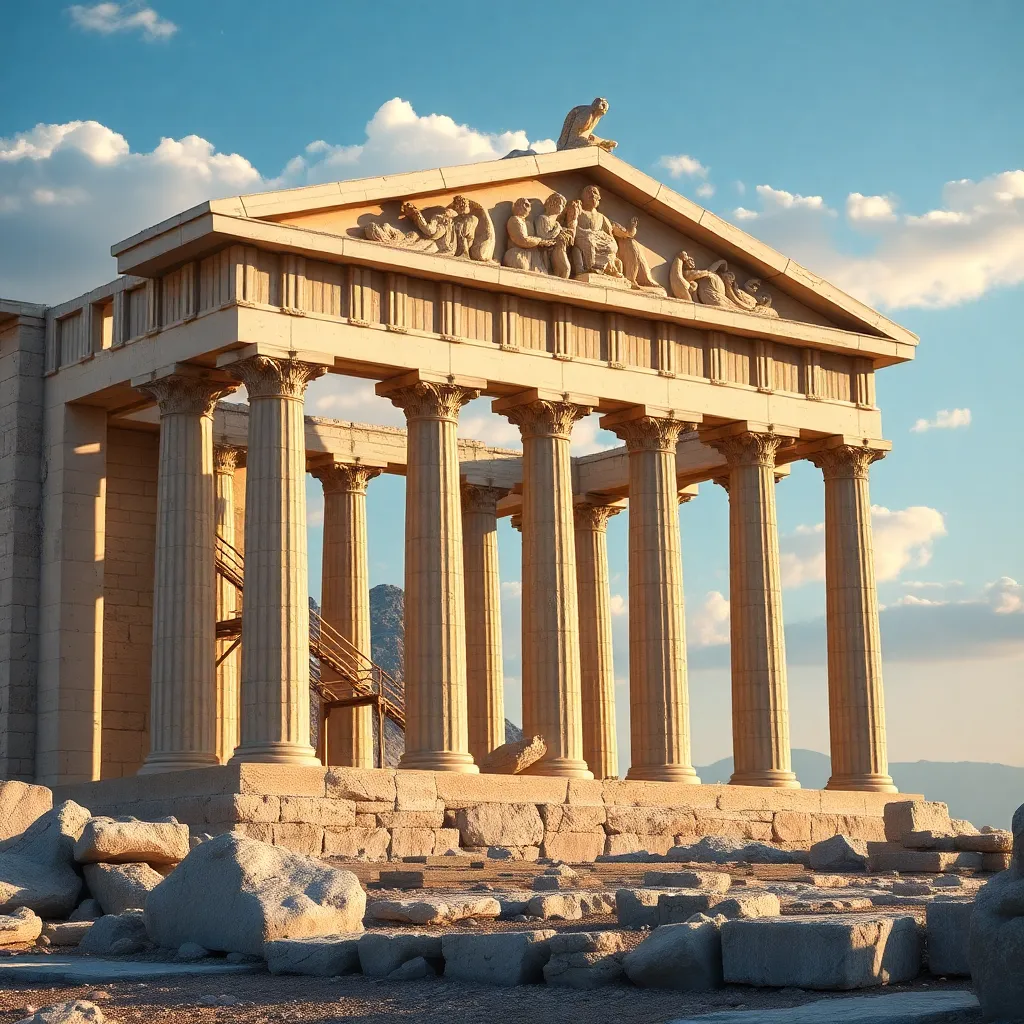The Sacred Sites of Athena: Pilgrimage in Ancient Greece
I. Introduction
Athena, the goddess of wisdom, warfare, and crafts, holds a significant place in Ancient Greek culture. Revered not only for her martial prowess but also for her intellect and skills in various crafts, she embodies the ideals that ancient Greeks aspired to. Pilgrimage, a vital component of ancient religious practices, allowed devotees to connect with their gods and seek their favor through sacred journeys. This article aims to explore the various sacred sites dedicated to Athena, where ancient pilgrims sought to honor their beloved goddess.
II. The Role of Athena in Greek Mythology
Athena is often depicted as a warrior maiden, fiercely protective of her city, Athens. Her attributes include:
- Wisdom: Athena is the goddess of wisdom and intelligence, often depicted with an owl, symbolizing knowledge.
- Warfare: Unlike Ares, who represents the chaotic aspects of war, Athena embodies strategic warfare and the protection of cities.
- Crafts: She is also associated with various crafts, particularly weaving, and is credited with teaching these skills to mortals.
Numerous myths depict her influence, including:
- The contest with Poseidon for the patronage of Athens, where she offered the olive tree, a symbol of peace and prosperity.
- The story of Arachne, whom she transformed into a spider for her hubris in challenging the goddess to a weaving contest.
Athena’s influence permeated ancient Greek society, instilling values of wisdom, courage, and civic responsibility.
III. The Acropolis of Athens: The Heart of Athena’s Worship
The Acropolis of Athens stands as a monumental testament to the reverence the Greeks had for Athena. This ancient citadel, towering above the city, housed several significant structures dedicated to the goddess. Key highlights include:
- Historical Context: The Acropolis served as a religious center since the Neolithic period, evolving into a hub of worship for Athena during the Classical era.
- The Parthenon: This architectural marvel, built in the 5th century BCE, is dedicated to Athena Parthenos (Athena the Virgin). Its intricate sculptures and grand scale symbolize the power and purity of the goddess.
- Rituals and Festivals: The Panathenaea, a festival held every four years, celebrated Athena’s birthday with athletic competitions, processions, and sacrifices.
IV. The Temple of Athena Nike
Located on the Acropolis, the Temple of Athena Nike is another critical site dedicated to Athena. Its significance includes:
- Location and Historical Background: Built around 427-424 BCE, this temple commemorates Athena as the goddess of victory and was erected to celebrate Athenian military successes.
- Architectural Features: The temple is a prime example of Ionic architecture, characterized by its elegant proportions and decorative friezes depicting battle scenes.
- Significance in Warfare: Athena Nike represents not just victory in battle but also the strategic intelligence required for success, embodying the spirit of the Athenian army.
V. Delphi: The Sanctuary of Athena Pronaia
Delphi, known primarily for its oracle, also housed a significant sanctuary dedicated to Athena Pronaia. Key points include:
- Religious Importance: Delphi was considered the center of the world in ancient Greek mythology and served as a major religious hub.
- Athena Pronaia’s Role: The goddess was worshipped as a protector and guide, particularly in her role as the goddess of prophecy and strategic planning.
- Pilgrimage Practices: Pilgrims traveled to Delphi to seek guidance from the oracle and participate in rituals dedicated to Athena, highlighting the site’s significance in their spiritual journeys.
VI. Other Notable Sacred Sites of Athena
Athena was venerated at several other sites throughout Greece, including:
- The Temple of Athena Lindia in Lindos: Situated on the island of Rhodes, this temple was an important religious site and served as a sanctuary for sailors seeking her protection.
- The Sanctuary of Athena at Sounion: Located at the southern tip of Attica, this site featured a temple dedicated to Athena, known for its stunning views of the Aegean Sea.
- Lesser-Known Sites: Other sites include the Sanctuary of Athena at Corinth and various local temples, each contributing to the rich tapestry of Athena’s worship.
VII. The Pilgrimage Experience in Ancient Greece
The journey to sacred sites was an integral part of the religious experience in ancient Greece. Key aspects included:
- Travel Routes: Pilgrims often traveled by foot or by sea, navigating well-worn paths leading to major sanctuaries, reflecting their dedication and faith.
- Festivals and Gatherings: Festivals, such as the Panathenaea, attracted large crowds, fostering a sense of community and shared devotion among worshippers.
- Spiritual Transformation: The pilgrimage experience provided personal growth and spiritual enlightenment, as devotees sought Athena’s guidance and blessings.
VIII. Conclusion
The sacred sites dedicated to Athena not only reflect her enduring legacy but also serve as windows into the spiritual life of ancient Greece. The practice of pilgrimage reveals the deep connection between the divine and the mortal, showcasing the importance of these journeys in understanding ancient Greek spirituality. Today, these sites continue to attract visitors, maintaining their relevance and inspiring awe for the ancient world. The enduring fascination with Athena and her sacred spaces reminds us of the timeless human quest for wisdom, protection, and community.




